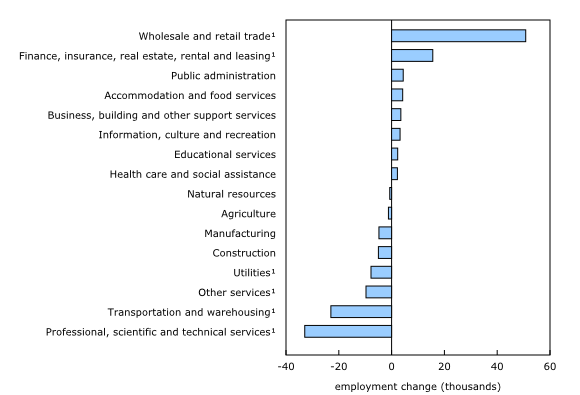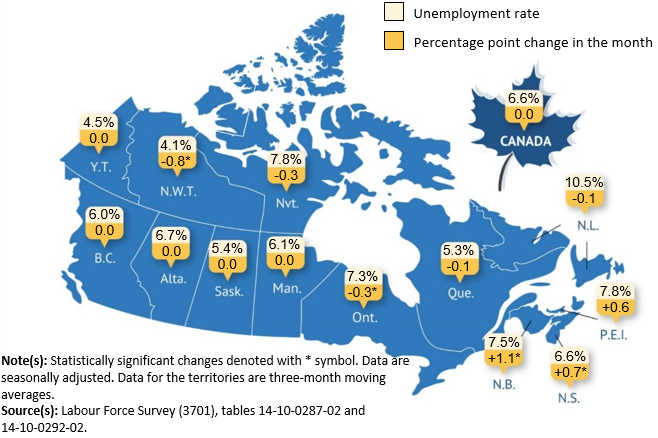Severe winter storms lead to significant decline in total hours worked: StatCan

Canada's job market showed little movement in February, with employment figures holding steady after three consecutive months of gains, according to the latest Labour Force Survey.
The country added just 1,100 jobs (+0.0%) during the month, bringing total employment growth over the past year to 387,000 (+1.9%).
“The labour market’s mini hot-streak cooled in February, though it’s unlikely the pause in job growth was directly linked to the trade war’s shockwaves,” said Indeed senior economist Brendon Bernard.
“Employment in the highly-exposed manufacturing industry ticked down slightly, in-line with other sectors, while overall layoffs remained low, helping to keep the unemployment rate steady at 6.6%. For now, we’re still in the world of typical LFS monthly volatility. We’ll have to wait another month to see if the new era facing the Canadian economy is becoming evident in the job numbers.”
While job numbers remained stable, a significant decline in total hours worked underscored the impact of severe winter storms across Central and Eastern Canada, says Statistics Canada.
Labour force participation
The unemployment rate remained at 6.6% in February, following declines in December and January. However, notable shifts emerged among demographic groups. The unemployment rate for core-aged women (25-54) declined by 0.2 percentage points to 5.4%, while for core-aged men, it increased by 0.3 percentage points to 5.9% due to a rise in job seekers.
For youth aged 15-24, the unemployment rate fell to 12.9% in February—a 0.7 percentage point drop—continuing a downward trend from January. Youth job seekers decreased by 41,000 (-9.3%) over the past two months, while youth employment rose by 22,000 (+0.8%), says Statistics Canada.
Meanwhile, the overall labour force participation rate dipped to 65.3%, the first decrease since September 2024. The decline was led by lower participation among youth (-0.8 percentage points) and workers aged 55 and older (-0.2 percentage points).
February's employment growth slowdown brought a reminder of another trend that’s fallen out of the spotlight recently: the pace of population growth is slowing, says Bernard, citing LFS figures that the number of adults in Canada rose by 47,000 in the month, far below the over 100,000 pace from last summer.
“Given changes in LFS tend to lag other population data sources, it’s possible the actual change in employment has been flatter than recorded in recent months.”
Total actual hours worked fell 1.3% in February—the largest monthly decline since April 2022. On a year-over-year basis, total actual hours worked were up 0.5% in February 2025, says Ottawa.
“Notable winter storms buried parts of Central and Eastern Canada in snow throughout the [Labour Force Survey] reference week of February 9 to February 15. In total, 429,000 employees lost work hours due to the weather for part of the week (not seasonally adjusted). This was more than four times higher than the average number of employees who lost work hours due to weather in February over the previous five years (96,000).”
Employment shifts across industries
While total employment numbers remained unchanged, notable sectoral shifts were recorded. The wholesale and retail trade industry added 51,000 jobs (+1.7%), marking a steady recovery from declines in early 2024.
Employment in finance, insurance, real estate, rental, and leasing also rose (+16,000; +1.1%), says Statistics Canada.

However, professional, scientific, and technical services saw a decline of 33,000 jobs (-1.6%), reflecting a cooling trend after strong growth in 2023 and 2024. Transportation and warehousing also lost 23,000 jobs (-2.1%), reversing gains from previous months.
Provincial job trends
Employment held steady across most provinces, with Nova Scotia being the only exception. The province saw a decline of 4,300 jobs (-0.8%), all in part-time positions, contributing to a 0.7 percentage point rise in its unemployment rate to 6.6%, says Statistics Canada.
In Ontario, employment remained largely unchanged (+17,000; +0.2%), but a decline in job seekers helped push the province’s unemployment rate down to 7.3% (-0.3 percentage points).
Meanwhile, Quebec’s employment remained stable for the third consecutive month, with an annual increase of 81,000 jobs (+1.8%). The province maintained one of the lowest unemployment rates at 5.3%.





